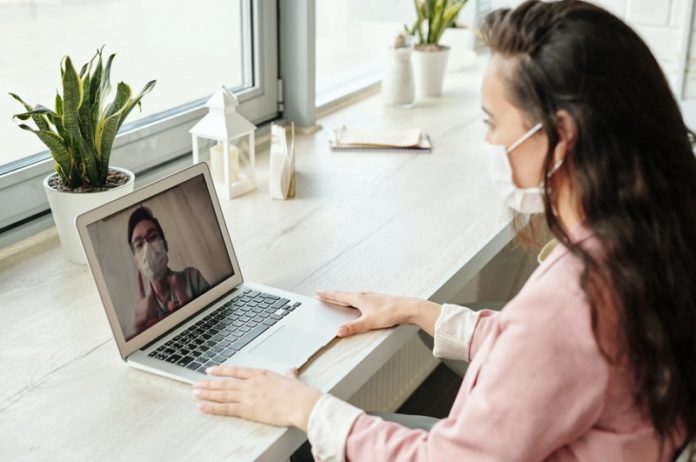Fintech companies have a reputation for being agile digital disruptors who aren’t bogged down by legacy processes and business models – which is essentially true. As such, you’d expect them to be able to weather the global COVID-19 storm effortlessly – after all, unlike their traditional competitors, they’re not as dependent on physical branches being open, and everything they do is online anyway. So, no problem, right?
Not quite. At a recent panel session at UK Fintech Week 2020 last month (all of which was conducted online, naturally), fintech executives discussed the challenges of maintaining business growth and managing a local and/or global remote workforce amid COVID-19 lockdowns and closed borders – and the general consensus is that it’s not easy even for digital disruptors.
Actually, business growth is the easy part – each of the fintech companies represented said that at worst, growth is happening more slowly than originally planned, but at least it’s happening. The real challenge is maintaining human relationships in terms of both staff management and customer relationships in the current COVID-19 environment of lockdowns and travel restrictions.
Complicating matters is the fact that it’s not a matter of simply waiting for lockdowns and circuit-breakers to be lifted and going back to business as usual. Enterprises need a long-term strategy to deal with the economic, social and cultural aftermath of COVID-19. How long? Think in years.
Business is personal
Fintechs have proven strikingly resilient to the economic effects of COVID-19 in the sense that people still need to use financial services even in lockdown conditions. For example, Gemma Steel, general counsel for Project Imagine, says her company’s B2C business Dozens has seen 10% month-on-month growth during the UK lockdown even after halting all advertising, while its B2B platform unit Pi1 is also still seeing growth and fielding lots of inquiries from potential clients – which is remarkable, she says, given that B2B relationships are usually fostered and nurtured with face-to-face meetings that are currently not possible due to travel restrictions.
“We’re dealing with clients from the four corners of the world, and have had to look at how we can amend the way that we deal with clients,” Steel says.
Before, you made relationships by getting on planes and going to see people and doing demos in person. Now we have to make sure that our demos and tools are translatable across videoconferencing tools and ensuring really that the business can continue.
However, Eric Mouilleron, founder and CEO of Bankable, says that while growth is still happening, it’s much slower than it ought to be, and travel restrictions are a key reason why.
“Zoom and emails are great, but unfortunately it’s not enough,” he insisted. “In the US, they have a saying that business is not personal. This is wrong – business is personal, so it is important to meet and build trust with the people you meet. The fact that we can’t travel is a pain, quite frankly – it’s not good for business.”
Claire Altman, chief corporate officer at Smart Pension, agrees that business deals are essentially about building trust and relationships with other humans, and that’s harder to do by remote.
“Yes, a lot will be done by Zoom and email, but it’s actually a cool thing about people that [technology] only take you so far – you do actually have to get in a room with someone else to properly build that relationship,” Altman says.
No such thing as overcommunication
That emphasis on human relationships is also key for managing your workforce under lockdown. Obviously face-to-face isn’t logistically possible, but for workforce management, the next best thing is constant communication, whether it’s related to work or personal matters, to ensure that employees don’t feel isolated or ignored as they work from home.
“We’ve put in place various things – like every week now we have a ‘town hall’ to update everyone on what’s been going on in the business,” says Altman. “There’s an anonymous question channel so people can feed in whatever questions or complaints they want. And we’ve set up breakfasts for people who want to just dial in and share a coffee with someone if they’re a bit fed up sitting at home.”
Altman adds that this ‘overcommunication’ approach works because it helps managers better understand and deal with the diverse needs and circumstances of its employees that wouldn’t necessarily be in play in an office setting.
“Some people are thriving in lockdown, and some people are not, and women at home are generally going to have responsibility for the children – that’s just the way it is – so how do you manage that during this period?” she says. “It’s all about asking the questions – what can we do to help you? If somebody needs to take the afternoon off because their three-year-old needs to be played with, then go ahead – we will manage.”
Mouilleron of Bankable agrees that overcommunication is essential.
From a staff perspective, the management never communicates enough anyway, and they’re right.
He adds that overcommunication should be happening from the top down. “When there is an incident onboard [the ship], the captain is not the first to be on the lifeboats. That goes alongside care and empathy – that’s what it’s all about. We need to listen, adapt and react to what our employees are telling us. We are here to support all of our team members, and they should express doubts if they have doubts.”
Mental hopscotch
A related challenge is mental health, which is a prominent issue with WFH. Employees may hate being cooped up at home, or feel isolated from human contact, or have personal or family issues to manage while at home, or feel they have to be ‘always on’, and end up glued to their screens for 12 hours a day rather than taking the normal breaks in an office environment – or all of the above and more.
Gemma Steel of Project Imagine says there are two key ways for management to approach mental health – one is prevention, which can include setting clear work hours (say, 10:00 -12:00 and 14:00-17:00), providing access to counselors and even appointing a morale manager.
The other key to managing employee mental health is to simply acknowledge that not everyone is going to be happy, and to let them be open and honest when they’re having a tough time – and that includes managers themselves.
“People in senior leadership need to lead from the top and be honest and open about what you’re going through, and you also need to be very aware of how your teams are doing, checking in with your teams regularly in terms of how they’re feeling and how they’re getting on with work,” she says.
However, says Jeppe Zink, general partner at Northzone, managers also need to be careful because mental health isn’t simple to understand, let alone manage.
“What is really hard is to do the diagnosis, and that’s where most things fall down,” he says. “There’s a lot of talk of mental health and a lot of talk about going for walks etc, but it doesn’t really have a whole lot to do with mental health on the clinical side of it.”
To be sure, he says, mental health is incredibly important, but it has to be handled the right way. “Right now, whether you implement specific working hours where you can only work from 12 PM to 2 PM or whatever, that isn’t the answer – there is something much more sophisticated that needs to happen.”
Moreover, that’s likely to be exacerbated by the current business communications infrastructure and tools available, which Zink says is not really up to the challenge.
Zoom isn’t everything for everyone. APIs are dreadful. There’s nothing elastic about how things are adaptable for slow connections, then you have privacy, security, etc – so I think there’s a whole wake-up call coming our way.
Claire Altman of Smart Pension is somewhat more optimistic, saying her company uses communications channels for everything from daily check-ins and gripe sessions to keeping staff aligned with organizational goals – and that management is actually communicating with staff far more as a result.
“The irony is that we’re probably doing a better job now as a leadership team of communicating with staff about what we’re doing, why we’re doing it, where we’re going, aligning people with the strategy and so on,” she says. “And we’re seeing in the surveys we’re doing that people genuinely appreciate the effort.”
After the lockdown
A frequently asked question among enterprises is whether WFH will be the ‘new normal’ after COVID-19 is finally under control, not least since no one’s really sure just when that will be.
That in itself is a major challenge even for enterprises that have a business continuity plan in place, says Simon Loong, founder and group CEO of WeLab, because most BCPs are not designed for long-term events.
“Most companies have a BCP for cases of one day or two days, like you have to shut down because of a typhoon, so you prepare the most essential operations to function in these scenarios,” Loong says. “But in this case, you need to embrace three or four weeks of everyone working from home. So everyone is going back to the drawing board in terms of how they redo their BCP.”
Northzone’s Jeppe Zink adds that enterprise leaders really need to get to grips with the reality that there is no going back to normal after the lockdowns have been lifted.
The lockdown is a short term thing, but the following recession, tighter credit markets, lower spending amongst households, low IT spend amongst businesses – all of that is a given.
“What’s not a given is whether it’s going to last two years or five years,” Zink says. “As a rule of thumb, if you look at the last five crises, the deeper the dip, the longer it takes. So I think you can expect this to be longer than the last [economic crisis] in terms of recovery, and that took three years.”
















